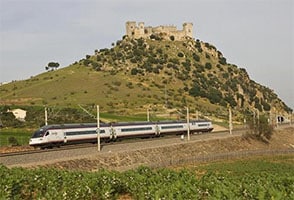 The first meaning of the term branch that the Royal Spanish Academy ( RAE ) mentions in its dictionary refers to the various ends that form a braid , a rope or a rope . The concept, however, has several other uses.
The first meaning of the term branch that the Royal Spanish Academy ( RAE ) mentions in its dictionary refers to the various ends that form a braid , a rope or a rope . The concept, however, has several other uses.
The halter that is attached to the bridle of an animal and the sections of a ladder that join in the same horizontal sector are also called branch. On the other hand, the segment that originates from the main line of a ditch, a mine or a road is called a branch.
The notion of branch, in this framework, also appears in the railway field. This is the name given to a route that is secondary to the most important one, being linked to it through an external point.
A railway branch , in short, is a subsidiary line of the main one. Its purpose is usually to link places that are distant from the trunk line.
Branches allow a line to be extended beyond its end, link two roads or shorten a route, for example. They generally do not have many stations.
There are several types of railway branches, among which the following stand out:
* junction branch : built to join a city with a trunk line. There are various examples, in different parts of the world. In Brazil we have the one in Ribeirão Bonito (which connected the municipality of San Carlos with the trunk line of the Paulista Company ) and the one in Piracicaba (to join the homonymous city with the Paulista Company). In Portugal, on the other hand, there is Tomar , thanks to which the city of Tomar and the Northern Line are joined;
* special branch : unlike the others, this one has only one station . We find examples of this type of branch in what are also called private lines, which are built to join large commercial or industrial units with the main line, among other options. The Hipódromo Branch and the National Stadium Branch , from Brazil and Portugal respectively, belong to this group;
 * shortcut branch : as its name indicates, it is used to shorten the route of a certain section. In Brazil and Portugal we find the Suzano-Ribeirão Pires and the Alcácer do Sal Variant , respectively. Note the term variant , used in Portuguese railway jargon to refer to the branch that has two forks (those with three are known as concordance ).
* shortcut branch : as its name indicates, it is used to shorten the route of a certain section. In Brazil and Portugal we find the Suzano-Ribeirão Pires and the Alcácer do Sal Variant , respectively. Note the term variant , used in Portuguese railway jargon to refer to the branch that has two forks (those with three are known as concordance ).
Urban bus or collective transport lines may also have branches. In these cases, the vehicles all start from the same place, but then the route they follow changes according to the branch. This way they cover a greater number of destinations and reach more areas.
As a separate note, we must mention that the term branch is part of a set phrase, in which it should not be interpreted literally; We are referring to a branch and a half blanket , an adverbial phrase that should be interpreted as "with poverty and scarcity."
The species of shrub whose scientific name is salix atrocinerea is also known as zalce, ash willow or branch . It belongs to the Salicaceae family, it can reach 22 meters in height and its branches are elongated. Its leaves may have teeth of appreciable thickness but not very pronounced, or may be entire, but they all have their veins visible and their texture is rough. It generally grows in cool soil, on sand or gravel bases, near streams and rivers.
Marcelo Ramal , finally, is an Argentine political leader and economist. Between 2013 and 2017 he was a legislator of the City of Buenos Aires for the Left and Workers Front .
